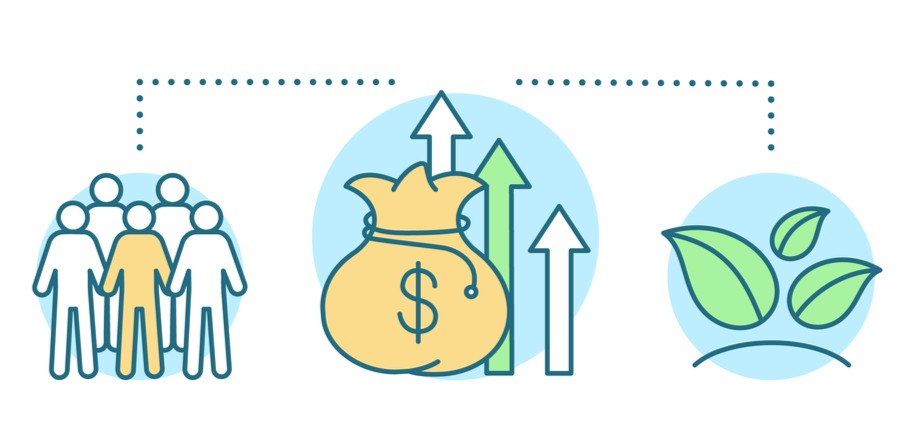Reducing Waste Goes Beyond Lean: Examining the Triple Bottom Line

Driving bottom-line growth is something every manufacturer seeks, but it’s a difficult task. Whereas top-line growth is a function of sales, bottom-line growth tends to be efficiency-based. Thus, there’s a natural correlation between bottom-line initiatives and a focus on Lean manufacturing. What most manufacturers don’t realize is that Lean initiatives don’t just grow the bottom line — they feed into the triple bottom line.
What is the triple bottom line?
If the bottom line represents a company’s total net income, the triple bottom line delineates the three largest drivers of that income: people, profits, and planet. Also called the 3Ps, these factors each have their own significance for how a manufacturer (or any company) makes money efficiently.
The philosophy behind the triple bottom line is simple. Companies should hold people, profits, and the planet in equal regard, to not only improve their own bottom line, but to create sustainability that drives broader betterments.
Since the theory was proposed in 1994 by management consultant John Elkington, the triple bottom line has become something akin to a new-age business philosophy. Some of the largest manufacturers in the world measure their success using triple bottom line benchmarks. Unsurprisingly, these same companies are known for their strong Lean manufacturing initiatives.
Lean’s natural contributions
Lean manufacturing concepts and the triple bottom line are intrinsically intertwined, largely because they share the same guiding principles. Take a look at how seamlessly triple bottom line principles correlate to Lean manufacturing practices:
- People: specialization and ongoing training to maintain standardizations.
- Profits: Lean operations equate to return on investment (ROI) and affordable production.
- Planet: efficiency equals less waste, which is better for the planet.
Embracing Lean naturally unlocks triple bottom line benefits for companies because it aligns operations with sustainable initiatives. For example, finding a way to recycle or reduce manufacturing waste improves profitability while saving the planet. Done using Lean methodologies, this is a quantifiable process with significant impact on the bottom line.
Likewise, specialization and ongoing training improve production efficiency, with expounding benefits that lead to professional growth. Again, Lean methods unlock triple bottom-line benefits.
Now, more than ever, the triple bottom line is vital
While the triple bottom line is an enticing prospect for any company, it’s becoming an increasingly essential focus for manufacturers. As they move beyond COVID-19, producers need to find new ways to increase the bottom line. They’re turning to Lean initiatives to optimize efficiency and, in doing so, are unlocking triple bottom line benefits. At a time when top-line growth (sales) may be hard to come by, a focus on the bottom line is imperative.
More than discovering the triple bottom line philosophy, manufacturers need to abide by it. In a 2018 op-ed with the Harvard Business Review, John Elkington stresses the need to revisit his original concept. He discusses how, since coining the term and the concept, the demand for sustainable frameworks has grown.
Today, triple bottom line benefits are attainable, but often only through a willingness to innovate. In a time of disruption and uncertainty, the confidence to take that leap is what will propel necessary bottom-line growth. It starts with Lean manufacturing.